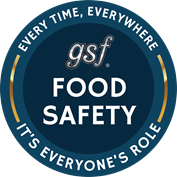Title Page
-
Conducted on
-
Prepared by
-
Location
-
Contractor
-
Subcontractor
-
Job name
JOB INFORMATION, Permits / Clearances
-
1. OSHA 300A form posted between February 1 and April 30
-
2. Confined Space
-
3. Hot work (fire watch, fire extinguisher) / Fire impairment
-
4. Work at Heights Permit
-
5. General Work Permit
-
6. Process Safety Management
-
7. Critical Lift Permit (proper rigging, signal person)
-
8. Toolbox talks up to date
-
9. Work areas properly signed and barricaded
-
10. Emergency Exits
-
11. Ingress and egress (ladders, stairs, etc)
-
Safe Work Behavior
-
Safe Work Conditions
HOUSEKEEPING
-
1. Work area neat, debris picked up and free of trip hazards
-
2. Projecting nails removed or bent over
-
3. Waste containers provided and used
-
4. Passageways and walkways clear
-
5. Cords and leads off the floor
FIRE PREVENTION
-
1. Adequate fire extinguishers, inspected and accessible
-
2. Phone number of fire department posted
-
Adequate Fire Watch
ELECTRICAL
-
1. Extension cords with bare wires or missing ground prongs taken out of service
-
2. Ground fault circuit interrupters being used
-
3. Terminal boxes accessible and equipped with required covers
-
4. Live equipment or machines are not left unattended
HAND, POWER & POWDER-ACTUATED TOOLS
-
1. Hand tools inspected regularly
-
2. Guards in place on machines
-
3. Operators of powder-actuated tools are authorized
FALL PROTECTION
-
1. Safety rails and cables are secured properly
-
2. Employees exposed to fall hazards are protected from falls
-
3. Employees below protected from falling objects
LADDERS
-
All Ladders inspected by a competent person
-
1. Ladders extend at least 36 inches above the landing if accessing upper level
-
2. Ladders are secured to prevent slipping, sliding or falling
-
3. Ladders with split or missing rungs taken out of service
-
4. Stepladders used in fully open position
-
5. Ladders are correctly used (3 points of contact)
SCAFFOLDING
-
1. All scaffolding inspected daily by a competent person
-
2. Erected on sound rigid footing
-
3. Tied to structure as required
-
4. Guardrails, intermediate rails, toe boards and screens in place
-
5. Working platform is fully decked
-
6. Cross braces are complete
-
7. Baseplates and mudsills in place
-
8. Proper access provided
-
9. Employees below protected from falling objects
FLOOR & WALL OPENINGS
-
1. All floor or deck openings are planked over or barricaded and coded/marked
-
2. Perimeter protection is in place
-
3. Deck planks are secured
-
4. Materials stored away from edge
-
5. Work surface conditions safe (slippery, uneven, unstable)
MATERIAL HANDLING
-
1. Materials are properly stored or stacked
-
2. If mechanical equipment is being used, is equipment in good condition
-
3. If equipment is being used properly
WELDING & BURNING
-
1. Gas cylinders stored upright, securely, and in good condition
-
2. Proper separation between fuels and oxygen (1/2-hr-rated fire wall or a minimum of 20 feet)
-
3. Burning/welding/cutting goggles or shields are used
-
4. Fire extinguishers are nearby
-
5. Hoses are in good condition
CRANES
-
1. Outriggers extended and swing radius barricade in place
-
2. Load charts are available on site
-
3. Hand signal charts are on crane
-
4. Crane operators’ logs are up to date
-
5. Employees kept from under suspended loads
-
6. Tag lines are used to guide loads
-
7. Nylon lifting slings or wire rope slings are inspected and tagged as required
PERSONAL PROTECTIVE EQUIPMENT
-
1. Hard hats are being worn
-
2. Arm/hand protection (gloves, guards, etc.)
-
3. Leg/Footwear Protection (boots, metatarsals, chaps)
-
4. Face Protection (Safety glasses, face shields, etc.)
-
5. Respirators are used when required
-
6. Hearing protection is being worn when required
-
7. High-visibility vests are being worn
-
8. All PPE kept in sanitary and reliable condition












